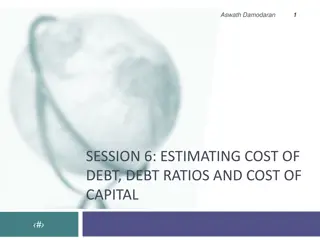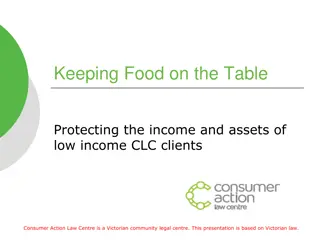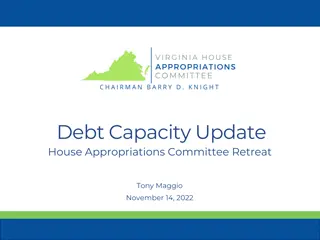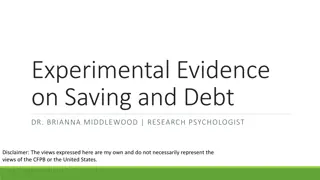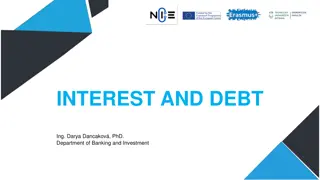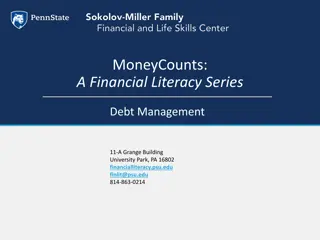Managing Medical School Debt: Essential Tips for Success
Learn essential strategies for managing medical school debt effectively, starting from minimizing debt during school to handling different types of loans, staying organized with loan servicers, and navigating repayment options during internship/residency. Get expert advice on budgeting, securing outside scholarships, understanding loan terms, and creating a plan for successful debt management.
Download Presentation

Please find below an Image/Link to download the presentation.
The content on the website is provided AS IS for your information and personal use only. It may not be sold, licensed, or shared on other websites without obtaining consent from the author. Download presentation by click this link. If you encounter any issues during the download, it is possible that the publisher has removed the file from their server.
E N D
Presentation Transcript
Medical School Debt Management EVERYTHING YOU NEED TO KNOW (IN 30 MINUTES OR LESS) MARGARET BAXTON MELISSA LIVOTI OFFICE OF FINANCIAL AID UVA SCHOOL OF MEDICINE
During Medical School Debt management begins during school: Minimize debt as much as possible be wary of the drop in the bucket way of thinking Search for outside scholarships Talk to your financial aid office Make and stick to a budget Keep track of your loans Know all the terms and conditions of your loans Be organized so there are no surprises later
Federal Student Loans Subsidized (undergrad) Unsubsidized Graduate PLUS Other: Perkins, PCL, LDS, HPSL Consolidation Private Student Loans Private education loans (from a bank) Institutional loans (from your school) Other Private Debt Bank or personal loans Credit card debt Residency/relocation loans Try the Motley Fool Debt Workbook Types of Loans During undergrad and medical school, you may borrow a variety of loans.
You should receive periodic statements from all of your loan servicers, even during school. Locating your Loans If you re unsure: Ask your financial aid office Ask your parents Federal Loans: nslds.ed.gov Private loans: check your credit report www.annualcreditreport.com It is your responsibility to make sure your loan servicer is able to contact you. Make sure your contact information is up-to-date!
Get and Stay Organized Create a file for each servicer Keep copies of everything, and notes on all conversations. Get a username and password for each servicer s website. Know your terms and interest rates for all of your loans. If you have old loans that are variable or not Direct Loans, consider consolidation: studentloans.gov Keep spouse/significant other informed so s/he can help. OPEN YOUR MAIL. Do not ignore your servicer s requests, even if you think they re mistaken.
Internship/Residency Forbearance No payments are due, interest accrues Options during Residency Repayment Standard repayment Extended repayment Graduated repayment Income-Driven Repayment: based on your income and family size Make a plan for residency before you start. For your federal loans, you may choose to repay, or not. For private loans, contact your loan servicer.
Internship/Residency Forbearance Available for federal subsidized, unsubsidized, Grad PLUS, and consolidation loans (not Perkins) Good for 12 months at a time, must fill out the right form and have it signed by residency program Mandatory lender may not refuse Check your account online to make sure forbearance is applied correctly Beware accruing interest Set aside money each month in an emergency fund, then pay your interest before it capitalizes if you don t have an emergency
Loan Repayment Repayment plan options: Standard 10-year level repayment default if you don t choose otherwise Extended Up to 25 years will lower the monthly payment, increase total interest if you actually take 25 years to repay Graduated Starts out low, increases every 2 years we don t recommend it Income-Based IBR, PAYE, or REPAYE, depending on eligibility 15% or 10% of your discretionary income, regardless of debt level
Income-Based Plans Payment of 10-15% of AGI that exceeds 150% of poverty line IBR: 15%, available on all federal Stafford loans PAYE: 10%, new borrower as of 10/1/07, must have received a loan 10/1/2011 REPAYE: 10%, available to all Direct Loan borrowers this plan is usually best for single medical residents Must reapply every year and submit tax returns IBR/PAYE: can file taxes separately to avoid using spouse s income Remaining debt forgiven after 25 years (20 for PAYE) Eligible for Public Service Loan Forgiveness Financial benefits IBR/PAYE: Small subsidy on unpaid sub loan interest REPAYE: half of all unpaid interest will be subsidized Unpaid interest will not capitalize as long as you are in the same plan
Fellowship: Federal loans are eligible for the Graduate Fellowship Deferment No payments are due, no interest accrues on subsidized loans After Residency Options during financial difficulty Loan Repayment/Forgiveness Programs Repayment
Options During Financial Difficulty Federal loans: Economic Hardship Deferment Unemployment Deferment General Forbearance (up to 3 years) Call and ask BEFORE you are late on a payment Forgiveness upon death or total permanent disability So: do not purchase life insurance to cover your loans Private loans: Ask your servicer, find out about capitalization
Loan Repayment Programs NIH: www.lrp.nih.gov $70,000 for 2+ years of biomedical or behavioral research in one of five research areas -- clinical; pediatric; health disparities; contraception and infertility; and clinical research for individuals from disadvantaged backgrounds NHSC: nhsc.hrsa.gov/loanrepayment Military: www.goarmy.com/amedd www.navy.com/healthcare/physicians www.afit.edu/adhplrp Indian Health Service: www.ihs.gov/loanrepayment State programs: www.aamc.org/stloan
Public Service Loan Forgiveness Must have Direct Loans (can consolidate) Must make 120 monthly payments under qualifying plan (IBR/PAYE/REPAYE) Must work in public service during those 120 months Any government or non-profit [501(c)(3)] organization Remaining debt after 10 years will be forgiven Good option if you can pay during residency and plan to have a low income for 5+ years No program to join submit employment certification form and then apply at end of 10 years Once you submit employment certification, loans will be transferred to Fedloan Servicing
Loan Repayment Three general approaches after residency: Fast & Furious If you re making $150,000 and can live on $50,000, then you ll have (after taxes) about $60,000/year to throw at your loans You can always prepay (pay more than required) without penalty Standard Repayment Sign up for the 10-year repayment, pay extra when you can Slow and Steady (pays the most) Take as long as possible to repay, to keep your monthly payment low minimizes the impact of your student loan payment on your Debt- to-Income ratio (important if you re getting other credit) May be a decent option if your interest rates are fixed and low
Loan Repayment - Tips Debt repayment two methods: highest-rate vs snowball repayment Sign up for automatic payments You ll never get a late fee, and there may be incentives Balance your checkbook! Put alerts on your calendar due dates, form reminders, recertifying income, etc. The interest you pay is tax-deductible, but maybe only while you re in residency (income limits) Higher education tax benefits: www.irs.gov/publications/p970
Loan Repayment - Tips Stick to a budget. If you ve never made a budget before: If you bring home $3000/month, that s $300 to savings, $600 towards debt reduction, and $2100 to live on. Every time you get a raise: 1/3 for taxes, 1/3 for debt/savings. Don t hesitate to see a financial professional if needed.
AAMCs FIRST: https://students-residents.aamc.org/financial-aid/ Resources Department of Ed Ombudsman www.ombudsman.ed.gov 877-557-2575 www.annualcreditreport.com Studentloans.gov www.donotcall.gov and opt out: 1-888-5OPTOUT www.optoutprescreen.com
UVA School of Medicine Financial Aid Office CLAUDE MOORE MEDICAL EDUCATION BUILDING, ROOM 1140 (434) 924-0033 MARGARET BAXTON: MED7Q@VIRGINIA.EDU MELISSA LIVOTI: MAL5JE@VIRGINIA.EDU
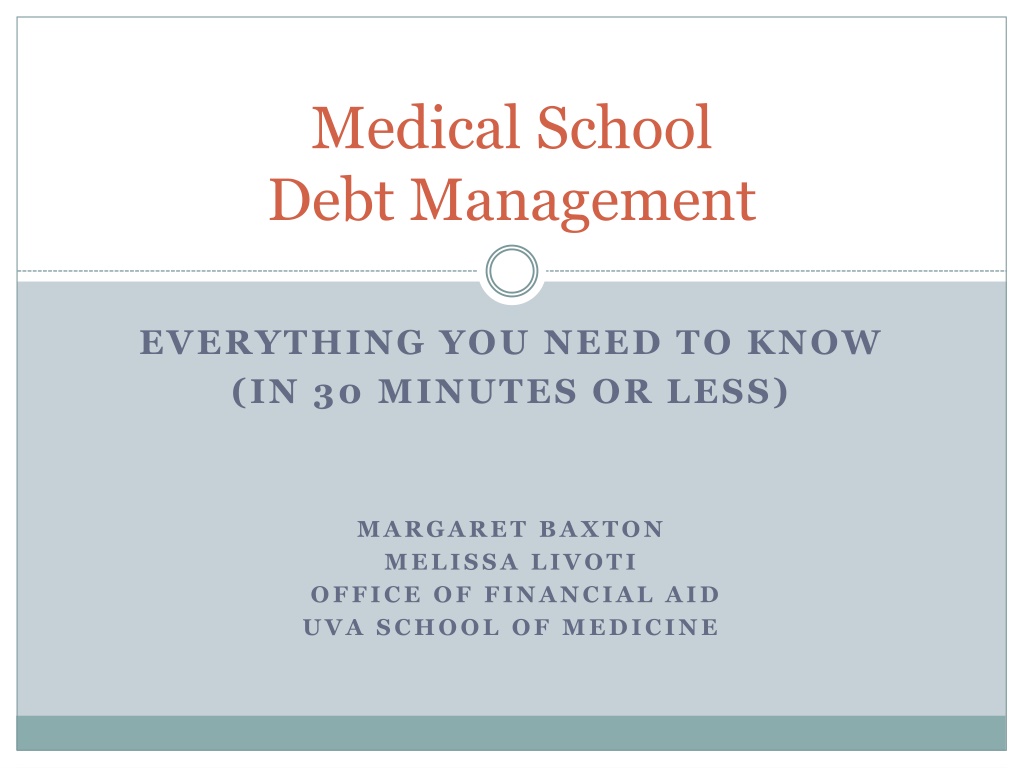
 undefined
undefined















